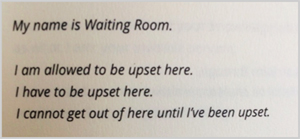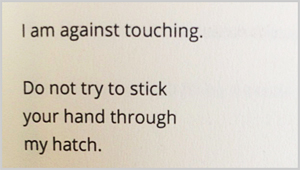 Stephanie recommends Third-Millennium Heart by Ursula Andkjær Olsen (translated from Danish by Katrine Øgaard Jensen):
Stephanie recommends Third-Millennium Heart by Ursula Andkjær Olsen (translated from Danish by Katrine Øgaard Jensen):
Third-Millennium Heart by Ursula Andkjær Olsen (via translator Katrine Øgaard Jensen) is a 200-plus-page poem or it is a collection of many poems. “All vessels are connected.”
Readers are greeted by the names of the book, the author, and the translator, but no mention of the original language, no mention of the genre, no year of original publication, no introductory notes or ephemera, no table of contents, no guideposts for how to read the book they’ve opened. “That is the structure.”
 The first line of the book is the beginning of a definition of the title/title character: “The third-millennium heart is a.” That first line leaves its definition open, both welcoming readers into the book as vessels connected to it (by allowing them to complete the definition before the poem does) and also pushing readers headfirst into one of the book’s primary instincts: naming/defining/locating. “That is the structure, continued.”
The first line of the book is the beginning of a definition of the title/title character: “The third-millennium heart is a.” That first line leaves its definition open, both welcoming readers into the book as vessels connected to it (by allowing them to complete the definition before the poem does) and also pushing readers headfirst into one of the book’s primary instincts: naming/defining/locating. “That is the structure, continued.”
Third-Millennium Heart is a “complex being,” its body language: refrain. As it moves through its repetitions, the book privileges voice: unrelenting, angry, accusatory, sarcastic. “The goal is” a “fleeting and flexible pattern.”
 Throughout what I read as the first two sections of the single poem in this book, pages demarcated by the bold text “My Name Is Waiting Room” and “Namedrunk/Nameless”—are these phrases in bold poem titles? section titles? amplified refrains? yes / “that is the structure”—the speaker names and unnames the body/ies it inhabits.
Throughout what I read as the first two sections of the single poem in this book, pages demarcated by the bold text “My Name Is Waiting Room” and “Namedrunk/Nameless”—are these phrases in bold poem titles? section titles? amplified refrains? yes / “that is the structure”—the speaker names and unnames the body/ies it inhabits.
This obsessive naming opens a door to another of the book’s primary instincts: declaring intent/desire. As we move through “My Distant Interior” and “These My Contact Areas,” Third-Millennium Heart assaults us with want, hurling repetitions of “The goal is,” “The desire for,” “The idea that,” “The hope that.”

These primary instincts alternate through the remaining sections, with “Darling Gloria” emphasizing definition (“I am,” “You are,” “We are”) and “The Idea of Red” emphasizing desire (“I want,” “I want,” “I want”); remaining sections “Great Transactions,” “Visions,” and “Third-Millennium Heart” again alternate these primary instincts, though to my reading they rely more on intellectualization than the previous sections.
 As a complex being, Third-Millennium Heart is self-conscious and arrogant. Afraid of itself as a language, it clings to equations. Empowered by its own diction, it rubs against itself: “thus fire was created.” The language, particularly with stunning inventions like “namedrunk,” rises out of itself only to revel in contradiction (literally “to say against” / or, maybe, diction that presses its body against another of its bodies). So “namedrunk” meets “nameless.” So paradox streams through us.
As a complex being, Third-Millennium Heart is self-conscious and arrogant. Afraid of itself as a language, it clings to equations. Empowered by its own diction, it rubs against itself: “thus fire was created.” The language, particularly with stunning inventions like “namedrunk,” rises out of itself only to revel in contradiction (literally “to say against” / or, maybe, diction that presses its body against another of its bodies). So “namedrunk” meets “nameless.” So paradox streams through us.
Third-Millennium Heart is a complex being against touching. The goal is to feel nothing inside its distant interior. In Third-Millennium Heart, everything originates from touch, from massage, from rubbing: “These my contact areas.” Touch and friction as origin lend themselves to considerations of such unrelenting structures as sexual trauma; capitalism; motherhood.
Third-Millennium Heart is a place that “takes its name from its surroundings.” The goal is the idea that you can’t feel nothing. Its distant interior: limitless.
